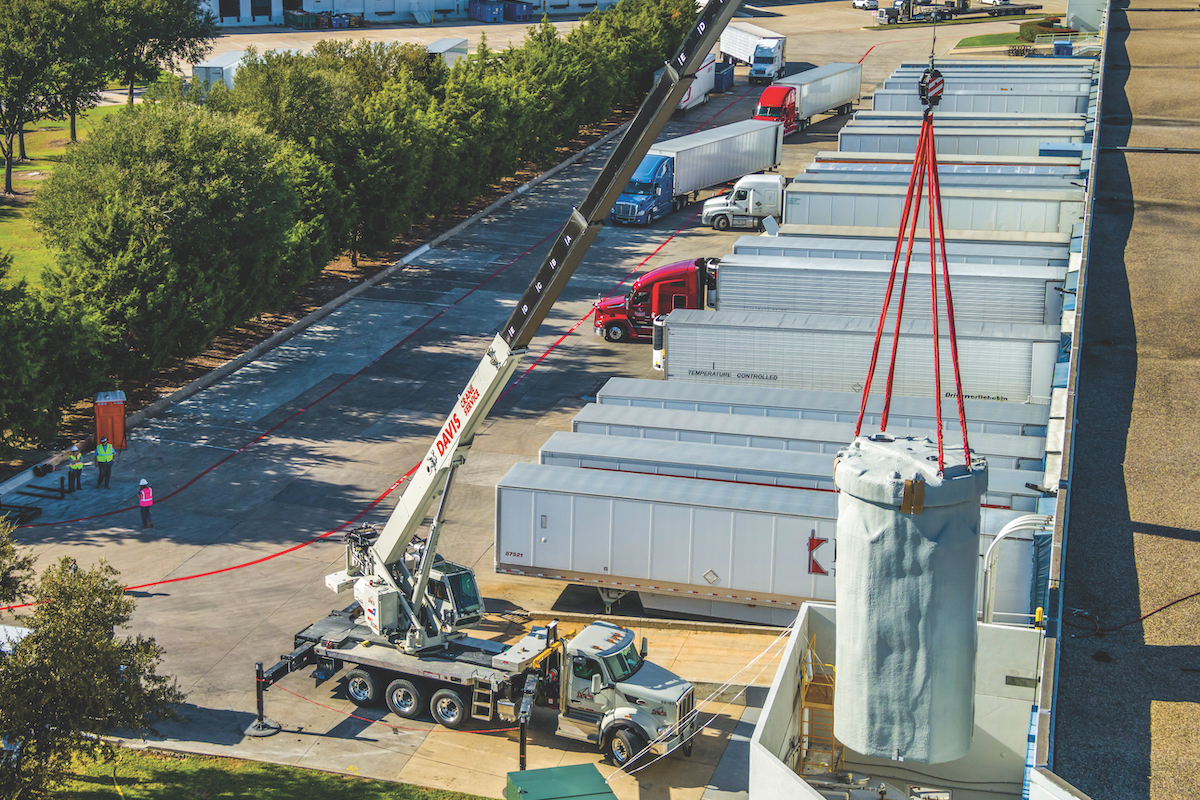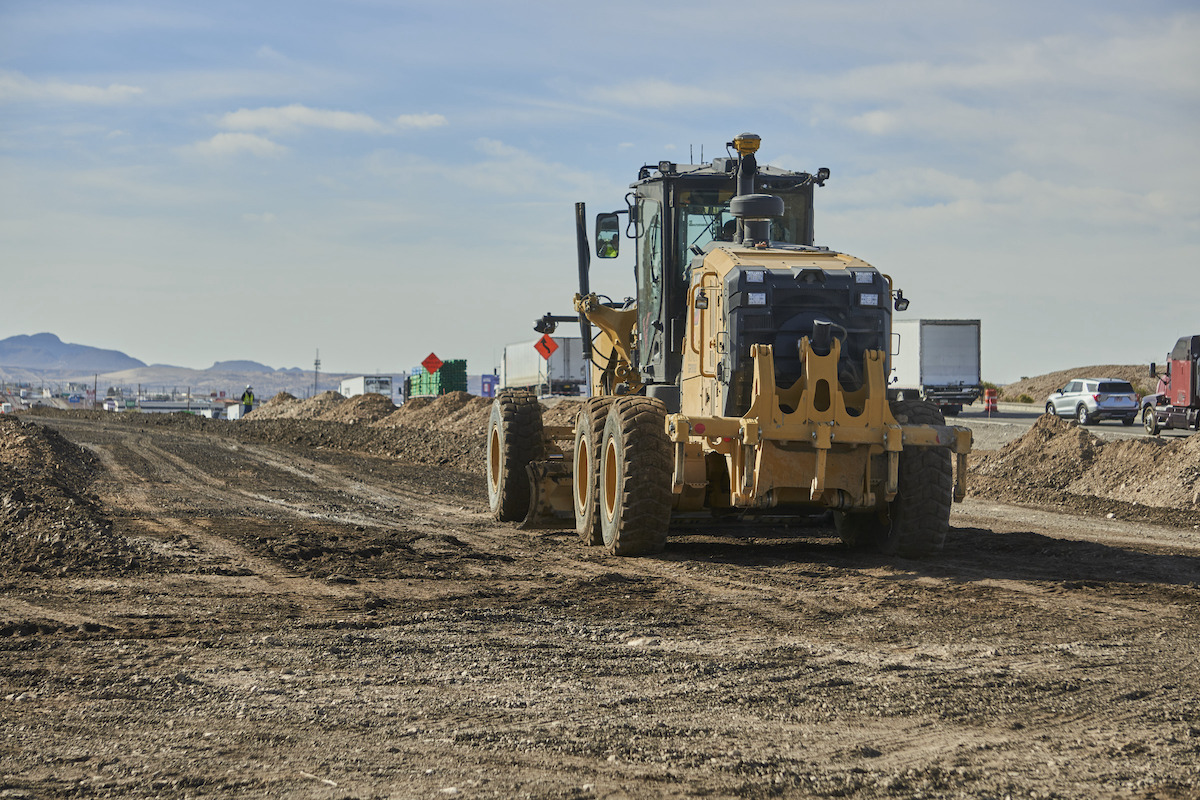The exceptions to that rule have revolved around national security and infant industries considered critical to national well-being.
But that approach is changing. A confluence of events triggered by supply chain disruptions, rising global security tensions and a changing domestic political landscape has resulted in a remarkable boom in manufacturing construction.
Call it the return of industrial policy, or government-subsidized reallocation of scarce resources toward the construction of key industries to support national economic and security goals.
Industrial policy is fraught with risk. Picking winners and losers amid a rapidly changing technological landscape could result in flushing billions of tax dollars down the drain.

| Your local Liebherr Construction Eq dealer |
|---|
| Nueces Power Equipment |
In addition, crony capitalism and a political sector that has no incentive to admit it made investment mistakes often result in an unwise and expensive sustainment of what the market would have otherwise corrected through price discovery.
Despite these risks, industrial policy has arrived, and it is most evident in manufacturing construction.
In fact, according to estimates by Apricitas Economics, nearly 60 percent of that construction spending resulted from the building of computer and electronics manufacturing facilities in the American Southwest. Importantly, though, investment in technology by the private sector and the government has not crowded out investment in other sectors. Rather, it appears that ongoing technology spending has primed the pump for investment in the rest of the economy.
This was the intention of the CHIPS and Science Act of 2022. Its purpose was to incentivize investment in facilities and equipment in the United States for the fabrication, assembly, testing or packaging of semiconductors, and to facilitate scientific endeavors ranging from STEM education to Mars exploration.
Private manufacturers were already investing in their future through technology spending during the recovery from the pandemic, but the CHIPS Act is first and foremost an investment in national security.
Its sponsorship of domestic innovation and the production of semiconductors is necessary for the advancement of artificial intelligence capabilities of the military and the health of the overall economy.
The incentivizing appears to be working, and not just in the Southwest.
Taiwan Semiconductor Manufacturing Co. said it would now spend $40 billion for a second site in Arizona.
Micron announced spending up to $100 billion over the next two decades to build a new computer chip factory in upstate New York, with the backing of federal and state funding.
Qualcomm and GlobalFoundries announced a partnership that includes $4.2 billion to manufacture chips in an expansion of GlobalFoundries’ upstate New York facility. In addition, Qualcomm plans to increase semiconductor production in the U.S. by up to 50 percent over the next five years.
The crowding-out theory assumes an economy limited by the amount of land, labor, or capital. Large-scale government-funded efforts to achieve national economic goals, under this theory, would misallocate critical resources away from their most productive use, and crowd out more efficient private-driven investment.
The crowding-out argument would find that every government investment in computer chip production precludes investment by the private sector that would by definition be more efficient and profitable.
But if computer chips are in such high demand in the United States, why are 90 percent of chips still manufactured elsewhere? Wouldn’t the price of a computer chip in short supply go so high as to invite competition among domestic producers?
The moment of crowding in investment and industrial policy has arrived.
It is clear that Taiwan, South Korea, and Japan have developed a comparative advantage, now surpassing the U.S. in chip foundry production.
If it weren’t for the pandemic and the shutdown of the supply chain, and now, China’s threatening posture toward Taiwan, U.S. corporations would most likely continue to outsource computer chips to cheaper, more proficient sources in Taiwan or South Korea.
The reason that the U.S. private sector has not just flipped the switch on computer-chip production is that by all accounts, investment in a semiconductor foundry is astronomical.
It simply does not make sense for a private investor to risk so much for an enterprise that would not be competitive with our trading partners and allies in Asia.
By one estimate, the United States has 12 percent of global manufacturing capacity, but more than 46 percent of the total semiconductor sales market. Clearly the American comparative advantage lies elsewhere.
In a perfect world, each nation should trade according to its comparative advantage, exporting goods that are efficiently produced domestically, while importing goods efficiently produced elsewhere. But how do we account for imperfections in trade and national security concerns and economic stability, best characterized as market failures?
The most recent and glaring example was the shortage of computer chips, which curtailed domestic auto production and directly contributed to the U.S. inflation shock.
The consequences ranged from consumers waiting for household appliances and unfinished automobiles sitting in lots to the shortage of legacy chips required for national security.
In some respects, the response of the fiscal and monetary authorities during the pandemic effectively ended the monetarist-driven notion of crowding out private investment.
The response of consumers and businesses to government intervention is self-evident. Income-assistance programs maintained spending and employment during the crisis and did not divert money from savings or investment.
The infrastructure programs for the rebuilding of public works and roads, the tax credits and rebates for energy-efficiency programs, and now the support for technological self-sufficiency have arguably underpinned a wave of construction activity in other sectors.
In real (inflation-adjusted) terms, the construction of computer, electrical, and electronic plants this year is double its longer-term average, but that has not precluded construction spending in other sectors.
According to an analysis by the Treasury Department, construction spending for manufacturing in the transportation, chemical, and food sectors is above longer-term averages in both nominal and inflation-adjusted terms.
In addition, government-sponsored construction projects that are too expensive for the private sector to undertake – roads, bridges, ports, and semiconductor factories – expand supply and will increase productivity. These are classic supply-side projects that will bring down inflation over the medium to long term.
In the end, government investment in the technology and scientific sectors has not crowded out investment in other sectors. Instead, investment in advanced manufacturing and productivity will have an enduring positive impact on the whole economy.





































































